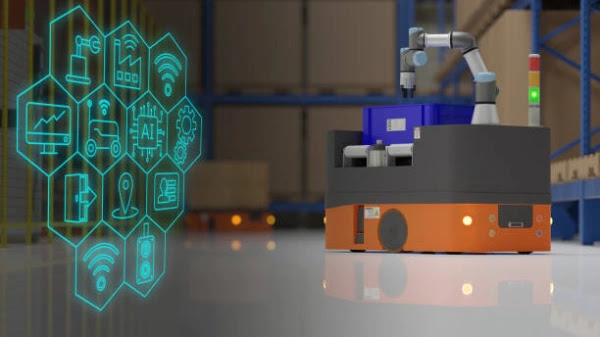Featured
- Get link
- X
- Other Apps
Edge Computing
Empowering Smart Systems with Proximity Processing
Introduction
In the realm of smart systems, where devices and sensors are
interconnected to collect and process vast amounts of data, edge computing
emerges as a transformative paradigm. Edge computing refers to the distributed
computing model where data processing and analysis occur closer to the data
source, at the network edge, rather than relying solely on centralized cloud
servers. This approach brings numerous advantages, including reduced latency,
enhanced security, and improved bandwidth efficiency, making it an integral
component of smart systems across various domains. In this article, we explore
the concept of edge computing and its role in empowering smart systems for
greater efficiency and innovation.
- Understanding
Edge Computing: At its core, edge computing decentralizes data
processing and storage by bringing computation closer to the data source,
whether it be sensors, IoT devices, or edge servers located near the
network edge. This proximity processing enables real-time data analysis
and decision-making, minimizing latency and reducing reliance on
centralized cloud infrastructure. Edge computing architectures typically
involve a hierarchy of computing nodes, ranging from edge devices at the
network periphery to centralized cloud servers, with each level performing
specific tasks based on computational requirements and data priorities.
- Key
Characteristics of Edge Computing: a. Low Latency: By
processing data locally, edge computing minimizes the time it takes for
data to travel between the source and the processing unit, thereby
reducing latency and enabling real-time responsiveness in smart systems.
b. Bandwidth Efficiency: Edge computing alleviates the burden on
network bandwidth by filtering and processing data locally, transmitting
only relevant information to centralized servers or cloud platforms,
thereby optimizing network resources and reducing data transmission costs.
c. Data Privacy and Security: By keeping sensitive data closer to
the source and within trusted boundaries, edge computing enhances data
privacy and security, mitigating risks associated with data breaches and
unauthorized access.
- Applications
of Edge Computing in Smart Systems: Edge computing finds applications
across a diverse range of smart systems, including: a. Industrial IoT
(IIoT): In manufacturing plants and industrial environments, edge
computing enables real-time monitoring and control of equipment,
predictive maintenance, and process optimization, enhancing operational
efficiency and reducing downtime. b. Smart Cities: In smart city
deployments, edge computing supports applications such as traffic
management, public safety, and environmental monitoring, enabling local
data processing for timely decision-making and resource allocation. c. Autonomous
Vehicles: Edge computing plays a critical role in autonomous vehicles
by enabling onboard processing of sensor data for navigation, obstacle
detection, and decision-making, ensuring rapid response times and robust
performance. d. Healthcare: In healthcare settings, edge computing
facilitates remote patient monitoring, medical imaging analysis, and
personalized treatment recommendations, improving patient outcomes and
reducing healthcare costs. e. Retail and Hospitality: Edge
computing enhances customer experiences in retail and hospitality
industries by enabling personalized recommendations, inventory management,
and real-time analytics for operational efficiency and customer
engagement.
- Challenges
and Considerations: Despite its benefits, edge computing poses certain
challenges and considerations that need to be addressed: a. Scalability:
Managing a distributed network of edge devices and ensuring
interoperability across heterogeneous hardware platforms can be complex
and require robust management and orchestration mechanisms. b. Data
Consistency: Ensuring data consistency and synchronization across edge
nodes and centralized servers is crucial to avoid discrepancies and
maintain data integrity in smart systems. c. Security and Compliance:
Edge computing introduces new security challenges, including device
vulnerabilities, data privacy concerns, and regulatory compliance
requirements, necessitating comprehensive security measures and risk
mitigation strategies. d. Resource Constraints: Edge devices
typically have limited processing power, memory, and storage capacity,
requiring optimization techniques and resource-efficient algorithms to
maximize performance and scalability.
- Future
Directions and Innovations: The future of edge computing holds immense
potential for innovation and advancement. Key areas of focus include: a. Edge
AI and Machine Learning: Integrating artificial intelligence (AI) and
machine learning (ML) capabilities into edge devices enables autonomous
decision-making, anomaly detection, and adaptive learning, unlocking new
possibilities for intelligent edge applications. b. Federated Edge
Architectures: Federated learning and edge computing converge to
create decentralized, collaborative edge architectures where edge devices
collaboratively train ML models while preserving data privacy and
security, enabling edge intelligence at scale. c. 5G and Edge Computing
Integration: The rollout of 5G networks accelerates the convergence of
edge computing and high-speed connectivity, enabling ultra-low latency and
high-throughput applications such as augmented reality (AR), virtual
reality (VR), and immersive gaming. d. Edge-to-Cloud Continuum:
Edge computing complements cloud infrastructure by providing localized
processing for latency-sensitive applications while seamlessly integrating
with cloud services for data storage, analytics, and management, creating
a continuum of computing resources spanning from edge to cloud.
Conclusion
Edge computing represents a fundamental shift in the way
data is processed, analyzed, and acted upon in smart systems, enabling
real-time decision-making, reducing latency, and enhancing security and
privacy. As the proliferation of IoT devices and smart systems continues to
accelerate, edge computing will play an increasingly critical role in
supporting a wide range of applications across industries. By leveraging the
power of proximity processing, edge computing empowers organizations to extract
actionable insights from data at the source, driving innovation, efficiency,
and agility in the era of digital transformation.
- Get link
- X
- Other Apps


